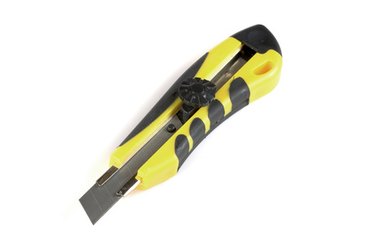Things You'll Need
Marker pen
Tape measure
Handsaw
Workman's knife
PVC primer
PVC end cap
PVC cement

Residential sewer pipes are generally made of either Acrylonitrile Butadiene Styrene (ABS) or PVC hard plastic. Both types of pipes are very durable and tough. Available in diameters ranging from 1 ½- to 4-inches, the pipe sections join together with couplings, primer and cement. Capping a sewer line requires installing an end cap, which looks like a straight coupling with one end sealed. If necessary, the cap can be sawn off in the future and new pipe added to the existing line.
Step 1
Mark the existing PVC sewer pipe at the point where the end cap needs to be installed. Cut through the mark on the pipe with a handsaw or hacksaw. Make a straight perpendicular cut through the pipe. Scrape away all plastic burrs with a workman's knife. Now cut into sections and remove the unwanted sections of sewer pipe.
Video of the Day
Step 2
Brush PVC primer around the outside end of the existing sewer pipe. Also prime the inside of a PVC end cap.
Step 3
Brush PVC cement on the primed end of the pipe, as well as the primed inside of the end cap. Quickly push the end cap fully onto the end of the pipe and hold it in place for five seconds while the cement dries.
Tip
Do not apply the cement to either the pipe end or the end cap until you are ready to install the cap in place. This is because the cement takes only seconds to dry. If there is room, a circular saw can also be used to cut through the existing sewer pipe. If you are working with ABS sewer pipe, use ABS cement to seal the cap to the pipe, but no primer is needed.
Warning
Wear eye protection when sawing through the pipe.
Video of the Day